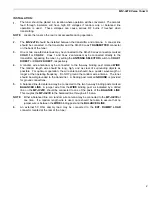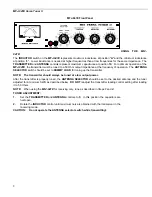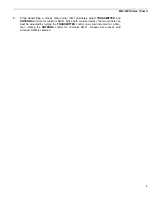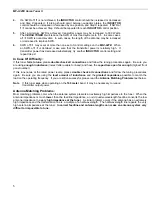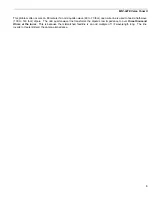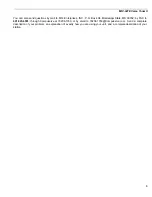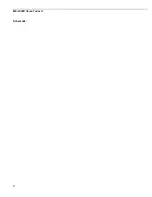
MFJ-941E Versa Tuner II
1
MFJ VERSA TUNER II
GENERAL INFORMATION:
The
MFJ-941E
is designed to match virtually any transmitter to any antenna, including dipoles, inverted-vees, verticals,
mobile whips, beams, random wires, and others fed by coax lines, balanced lines or a single wire. An eight-position
antenna-selector switch provides versatile antenna selection. The
MFJ-941E
will handle up to 300 Watts of transmitter
RF output power. The
MFJ-941E
employs a cross-needle meter so forward power, reflected power and SWR may be
read simultaneously.
CROSS-NEEDLE SWR/WATTMETER:
The meter on the
MFJ-941E
may be used alone or with the tuner. Set the
ANTENNA SELECTOR
to
COAX 1 DIRECT
or
COAX 2 DIRECT
to use the meter without the tuner. The
MFJ-941E
utilizes a cross-needle meter so FORWARD
power, REFLECTED power and SWR may be read
simultaneously
in two ranges. FORWARD power may be read by
setting the power range switch to
HI
(
300
Watts) or
LO
(
30
Watts). Next read the power level on the
FORWARD
SCALE
. REFLECTED power is shown simultaneously on the
REFLECTED SCALE
. SWR is determined by observing
the intersection point of the two needles. No SWR sensitivity adjustment is needed to read SWR. The
HI
range is
300
Watts FORWARD and
60
Watts REFLECTED. The
LO
range is
30
Watts FORWARD and
6
Watts REFLECTED. The
difference between the
HI
and
LO
scales readings is a factor of
10
.
The meter lamp can be powered by a 12 Vdc source, such as the optional
MFJ-1312B
power supply. Use a 2.1mm
coaxial plug with the center conductor of the plug connected to the positive and the sleeve connected to ground. The
METER LAMP ON/OFF
switch will activate the meter lamp.
ANTENNA SELECTOR:
The
ANTENNA SELECTOR
switch utilizes eight positions. They are
DUMMY LOAD
,
BALANCE LINE
,
COAX 1
, and
COAX 2
positions for both
BYPASS
(direct) and
TUNED
(through) the tuner operation. An external 50 Ohm dummy
load can be connected to the
EXT LOAD
connector located at the rear of the tuner. Do not continuously key into the
dummy load for more than 2 minutes at a time.
CAUTION:
Never use the
MFJ-941E
for
OVER
300 Watts
of RF output power, even in the
DIRECT
or
DUMMY LOAD
positions.


